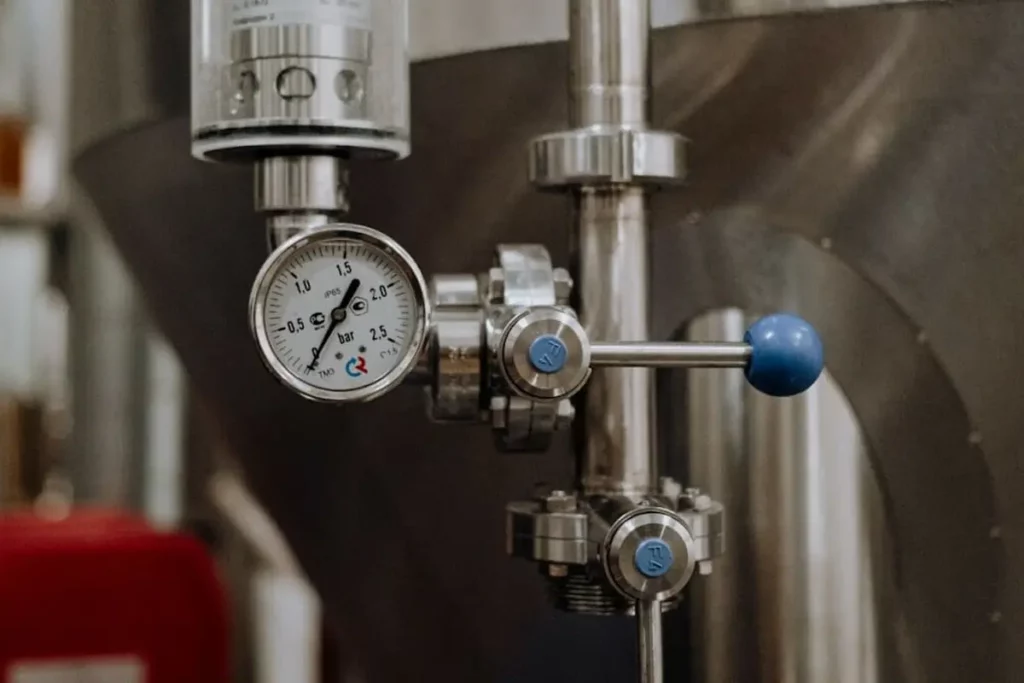Steam control valves manage steam pressure and flow in various industrial applications, particularly in electricity generation and chemical and food processing. Apart from these industries, industrial steam control valves are also used in cleaning, heating, and humidification equipment.
While steam is often considered old-fashioned, it still plays a significant role in conveying heat energy. As such, steam control valves are valuable components of the industrial world. With steam being one of the most available, reliable, and efficient resources of heat energy for industrial production, state-of-the-art valves become invaluable to maximise efficiency.
Introduction of Steam Control Valves
Typically, valves work to control the flow of a liquid or gas in a system. Steam control valves, however, are a little more complicated than this. That’s because steam control valves also control the temperature and pressure of the vapour or liquid.
Steam, liquid, or gas pressure affects its temperature. As such, it’s crucial to regulate the pressure of the steam, chemical compound, or water at the desired point. Steam control valves play an essential role in compensating for the load disturbance caused by changes in pressure throughout the entire process.
Automatically operated steam control valves are installed on a control loop fitted with a temperature and pressure sensor. The controller sends a signal to regulate the steam flow depending on the desired process condition. The steam control valve, in turn, corrects the condition of the steam and keeps the process efficient.
Steam Control Valve Types, Applications, and Advantages
You can find many types of steam control valves on the market. However, only a few control valves are preferred in regulating steam pressure and temperature in an industrial system. They include:
- Globe Valves (Straight through and Angle Type)
- Ball valves (Metal and High-Temperature Seat Type)
- Butterfly valves (Triple Offset Type)
These valves have different applications and present varying challenges and benefits.
Globe Valves
Globe valves are known for their spherical body shape, with an internal partition separating the body into two halves. A circular opening in the dividing partition creates a seat on which a moveable plug or disc can be screwed down to close the valve and stop the fluid flow.
The position of the plug or disc in the globe valve can be varied between fully open and fully closed to suit the required flow rate for a particular application, making them an excellent valve for precise regulation control.
Applications of Globe Valves
Globe valves are commonly used in:
- Feedwater or chemical feed systems
- Boiler and main steam vents and drains
- Turbine lube oil system and others
- Cooling water systems
- Fuel oil systems
Benefits of Globe valves:
- Suitable for use in high-pressure and high-temperature systems
- Good shutoff capability
- Suitable for throttling and regulating flow
- Easy to maintain and resurface the seats
Ball Valves
Ball valves utilise a rotary ball to control the flow of steam or liquid in a system. The ball blocks the flow of the gas when pushed to one side and allows its flow when pushed to the opposite side. Ball valves are more popular than gate valves as shut-off valves for their reliability in sealing and long life span.
Ball valves, however, have a relative limitation in accurately controlling the flow rate of the medium. It’s why they’re not popular in industries that require high accuracy in maintaining medium flow rates. They are only used as control valves in several special cases.
Applications of Ball Valves
Ball valves are most commonly used in:
- Cooling water systems
- Feedwater systems
- High-point vents and low-point drains services
- Bubble-tight services for liquid and gaseous applications
- Steam service
- Instrument isolation
Benefits of using ball valves:
- Lighter and smaller than gate valves
- Quick to open and close
- Features multi-port designs to improve versatility and reduce valve-count
- Long life spans
- Efficient in high temperature and high-pressure applications
Butterfly Valves
The principle behind butterfly valves and ball valves is very similar. By rotating its disk, the butterfly valve closes or opens the flow of a gas or liquid. Butterfly valves are among the most used valves due to their low costs, lightweight, quick operation, and small installation process. Nevertheless, you will need a gearbox, handles, or automated actuators to control a butterfly valves operation.
Applications of Butterfly Valves
Some of the most common applications of butterfly valves include:
- Food and beverage industry applications
- Chemical, oil, and pharmaceutical applications
- Wastewater treatment
- Water and gas supply
- Fuel handling and fire protection
Benefits of butterfly valves:
- Low cost of purchase and maintenance
- Fast opening and closing
- Light and compact
- Reasonably accurate flow control
Find the Right Valve for Your Situation
Finding the correct steam control valve for your system is critical. However, that’s easier said than done if you’re new to the industry. The type and quality of your steam control valve will be a core determiner of your machine’s efficiency.
Are you looking to install a control valve in your new system or looking to replace a faulty one? Whichever is the case, we can provide you with information on the best steam control valve for your specific system and guide you to making the right investment for your business. You can simply hop on our website to book an appointment today or find us on Facebook and talk to us.



